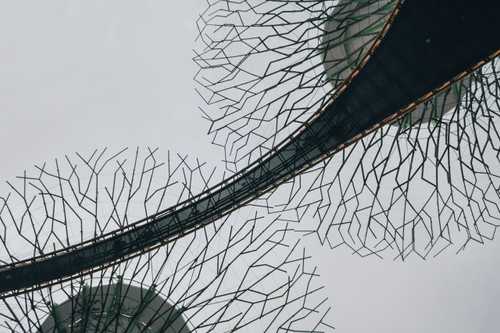
What is sonic biomimicry? Definition and examples
Biomimicry is a design technique which draws on strategies found in nature and uses them to solve design challenges in human contexts. At its broadest, biomimicry can allow “products, processes, and systems” to be developed in ways which maintain “sustainab[ility] and […] solidarity with all life on earth”. Since the natural world has refined its designs over four billion years of evolution, “it is logical that human construction can benefit in drawing from its influence”.
The word biomimicry is thought to have first been used in the scientific journal Inorganica Chimica Acta, in 1982, and was popularized by Biomimicry: Innovation Inspired by Nature, a 1997 book by biologist and author Janine Benyus.
Though biomimicry may overlap other fields and practices – such as biomorphism (where designs visually echo natural forms) or bioutilization (where designs incorporate biological material) – if a design recalls, say, a sea shell, or is made of wood, that doesn’t guarantee it’s been made according to biomimetic principles. On the contrary, designs made biomimetically may not overtly mirror recognizable natural forms; instead, they will work according to principles from the natural world.
More specifically, biomimicry can take three forms:
- Replicating forms or physical properties (such as surfaces for hospitals which resist bacteria by emulating the texture of shark skin)
- Replicating a process (such as a technique for making a carbon-sequestering form of cement according to the method by which corals grow their exoskeletons)
- Replicating ecosystems: closed loops which produce no waste. Creating this kind of system would make “products, systems, and cities functionally indistinguishable from the natural world”.
Other examples of biomimetic principles which have been put into practice include:
- Buildings constructed according to the “cage-like structure” of the Venus’ flower basket, a type of marine glass sponge. The strength and stability of this latticework formation was famously incorporated into London’s 30 St Mary Axe skyscraper (AKA ‘the Gherkin’)
- Velco. Its inventor, electrical engineer George de Mestral, was famously reportedly to have been inspired to create this hook-and-loop fastening by observing the burdock burrs which affixed themselves to his dog’s fur
- Glass featuring UV patterns which are visible to birds (but not humans), deterring them from flying into windows. One hundred million birds die this way every year, but Ornilux Bird Protection Glass was inspired by the UV-reflective webs of orb-weaver spiders, which birds are able to avoid.
Biomimicry can also be used in the world of sound. Examples of sonic biomimicry include:
Quieter (and more stable, durable, and energy-efficient) wind turbines. It has been found that these benefits can be conferred by giving turbine blades serrated edges inspired by humpback whales. The “bumpy protrusions” on the front edge of their fins (tubercles) “help generate lift [and] reduce drag”, and make the whales much less likely to stall while swimming (ie, lose lift). These benefits are also transferable to hydroelectric turbines, airplane wings, submarine fins, irrigation and ventilation pumps, and even ceiling fans.
Lopsidedly weighted winged maple seeds (samaras) and the sound-muffling fringe along the trailing edge of owls’ wings can also be beneficial for improving wind turbines’ efficiency and making them run more quietly.
In Japan, the high-speed Shinkansen rail network of ‘bullet trains’ reaches speeds of around 200 to 275 miles per hour (500 kilometers per hour; the UK averages about 125–140 mph and the US 90–125 mph). However, one cost of this speed and efficiency is the sonic boom caused by changing air pressures when the trains emerge from a tunnel – a phenomenon which could be heard by disgruntled residents from up to 1,312 feet (400 m) away. The first Shinkansen rail line opened in 1964, yet it wasn’t until 1994 that engineer Eiji Nakatsu came up with a solution, thanks to his hobby of birdwatching. The addition of a 50 foot (15 m) steel ‘beak’ to the trains not only solved the problem of ‘tunnel boom’, but also increased fuel efficiency by 10–15% due to the lessening of air resistance.
Featured photo by Daniel Buhat on Unsplash
Earth.fm is a completely free streaming service of 1000+ nature sounds from around the world, offering natural soundscapes and guided meditations for people who wish to listen to nature, relax, and become more connected. Launched in 2022, Earth.fm is a non-profit and a 1% for the Planet Environmental Partner.
Check out our recordings of nature ambience from sound recordists and artists spanning the globe, our thematic playlists of immersive soundscapes and our Wind Is the Original Radio podcast.
You can join the Earth.fm family by signing up for our newsletter of weekly inspiration for your precious ears, or become a member to enjoy the extra Earth.fm features and goodies and support us on our mission.
Subscription fees contribute to growing our library of authentic nature sounds, research into topics like noise pollution and the connection between nature and mental wellbeing, as well as funding grants that support emerging nature sound recordists from underprivileged communities.
